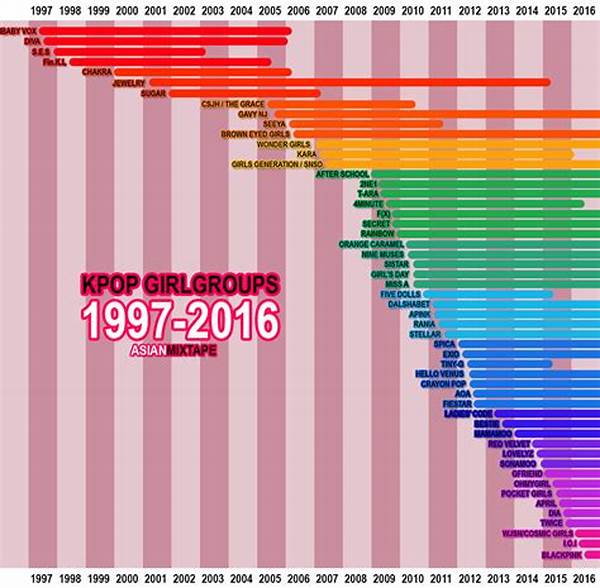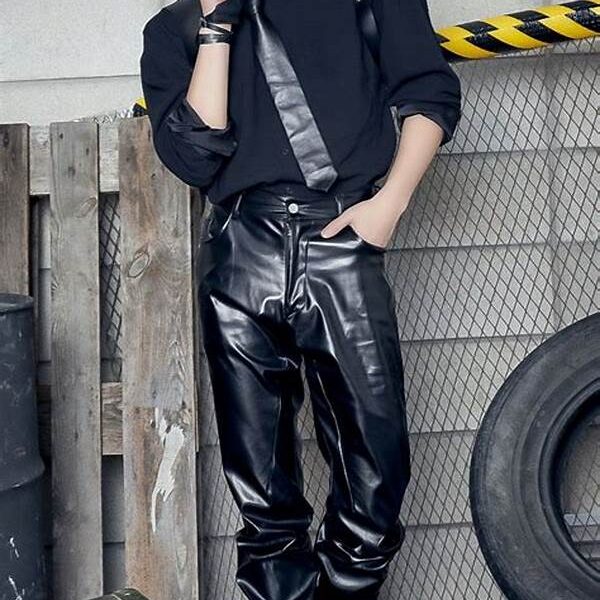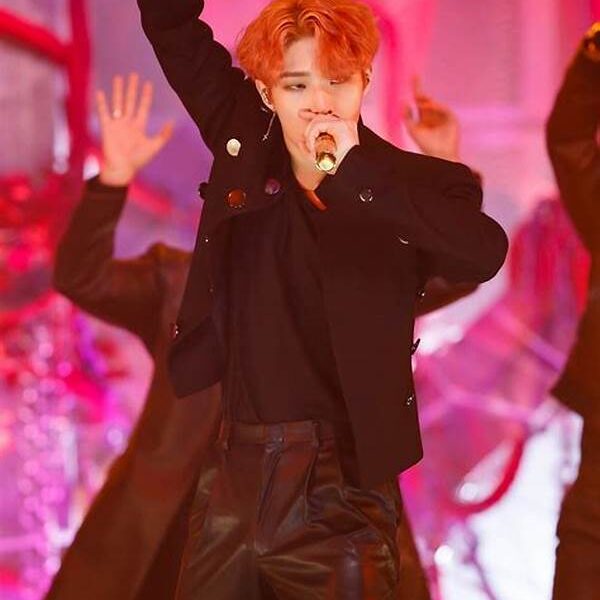Hey there, K-pop fans! If you’re as obsessed as I am with the ever-evolving world of K-pop, you’re in for a treat. Let’s dive into the K-pop style innovation timeline and uncover how the genre has transformed fashion and music on a global scale. From the bold and daring to the subtle and chic, K-pop idols have left an indelible mark on the world of fashion, setting trends and breaking boundaries. Ready to embark on a stylish journey through time? Let’s get started!
Read Now : “fashion Evolution In Ateez Performances”
The Evolution of K-Pop Fashion
The K-pop style innovation timeline is like a vibrant tapestry woven with threads of creativity and bold experimentation. It all kicked off in the mid-90s when groups like Seo Taiji and Boys introduced the world to a fusion of Western pop and Korean flair. Their eclectic and sometimes rebellious style paved the way for future generations of idols. Fast forward to the 2000s, when iconic groups like TVXQ and Super Junior embraced more sleek and polished looks, incorporating fashion-forward elements that caught the world’s eye.
As we entered the 2010s, the K-pop style innovation timeline reached new heights. Groups like BIGBANG and BTS exploded onto the scene, becoming global style icons. They pushed boundaries with their daring fashion choices, from G-Dragon’s avant-garde ensembles to BTS’s coordinated yet diverse outfits. Bright colors, bold patterns, and an array of textures defined this era, inspiring fans and fashionistas alike to embrace individuality.
Today, the K-pop style innovation timeline continues to evolve, with each new group adding its unique touch to the ever-growing legacy of K-pop fashion. Idols like BLACKPINK and NCT not only set trends but also collaborate with top designers and luxury brands, solidifying their status as global fashion influencers. Their style choices often reflect broader cultural shifts, making K-pop fashion a fascinating lens through which we can observe societal changes. So, whether you’re a long-time fan or a newcomer, there’s no better time to dive into the world of K-pop style and explore this timeline of innovation.
Key Moments in the K-Pop Style Innovation Timeline
1. The Birth of K-Pop Fashion (1990s): The K-pop style innovation timeline began with Seo Taiji and Boys, introducing a mix of Western and Korean styles that set the stage for future trends.
2. Polished Perfection (2000s): Groups like TVXQ and Super Junior ushered in an era of sleek, polished looks, emphasizing coordinated outfits and sophisticated style.
3. Global Trendsetters (2010s): BIGBANG and BTS revolutionized K-pop fashion, embracing bold colors and unique patterns, attracting international attention.
4. Luxury Collaborations (2010s-2020s): BLACKPINK and NCT collaborated with top designers, elevating K-pop style to a new level of global fashion influence.
5. Cultural Reflections (2020s): Today’s idols use fashion to reflect cultural shifts, making the K-pop style innovation timeline a dynamic and ever-evolving phenomenon.
Influential Idols in the K-Pop Style Innovation Timeline
The journey through the K-pop style innovation timeline wouldn’t be complete without highlighting the idols who have left their mark on the fashion world. Take G-Dragon, for example, whose fearless approach to fashion has made him a global icon. With his ever-changing hairstyles, unique accessories, and avant-garde outfits, he’s continuously challenged the status quo.
Another standout is BTS’s V, known for his eclectic style that mixes classic elegance with a modern twist. Whether he’s donning a tailored suit or experimenting with quirky prints, his fashion sense has made him a trendsetter in the K-pop world. Similarly, BLACKPINK’s Lisa, with her bold and edgy style, has become a muse for many designers, further proving the power of K-pop in global fashion.
These idols, among others, have played a pivotal role in shaping the K-pop style innovation timeline, pushing boundaries and inspiring fans worldwide to embrace their individuality and creativity. Through their fashion choices, they have bridged cultural gaps and sparked conversations about diversity, identity, and personal expression.
Notable Trends in the K-Pop Style Innovation Timeline
1. Streetwear Dominance: Streetwear has become a staple in K-pop fashion, with idols incorporating elements like oversized hoodies and sneakers into their looks.
2. Eclectic Mixes: Mixing and matching styles from different eras and cultures is a common trend, creating a unique and dynamic K-pop aesthetic.
3. Bold Hair Colors: Bright and unconventional hair colors have become essential to the K-pop style innovation timeline, allowing idols to express individuality.
4. Accessorizing with Flair: Statement accessories, from chunky jewelry to stylish hats, play a large role in defining the K-pop look.
Read Now : Wallet-friendly K-pop Concert Outfits
5. Sustainable Fashion: Growing emphasis on eco-friendly and sustainable fashion choices reflects the broader societal trend within the K-pop style innovation timeline.
6. Gender-Fluid Fashion: Many idols challenge gender norms with androgynous looks, promoting inclusivity and diversity in K-pop fashion.
7. Fusion of Cultural Elements: Incorporating traditional Korean elements into modern outfits highlights the cultural richness within the K-pop style innovation timeline.
8. Luxury Brand Collaborations: Partnerships with luxury fashion brands reinforce the global influence of K-pop style.
9. Tech-Infused Attire: Innovative use of technology in fashion, from LED lights to smart fabrics, adds a futuristic touch to K-pop outfits.
10. Fan-Inspired Designs: Idols often wear designs inspired by fan art, showcasing the unique relationship between artists and their fans in the K-pop realm.
The Impact of Social Media on the K-Pop Style Innovation Timeline
In today’s digital age, social media plays a crucial role in shaping the K-pop style innovation timeline. Platforms like Instagram and TikTok have become powerful tools for idols to showcase their fashion choices, reaching millions of fans worldwide. This connectivity allows for faster dissemination of trends and styles, blurring the lines between fashion seasons and traditional marketing strategies.
Social media has also given rise to influencers within the K-pop community, where fans become trendsetters themselves, drawing inspiration from their favorite idols. The interactive nature of these platforms fosters a two-way conversation between idols and fans, with idols often taking note of fan feedback and incorporating it into their fashion choices. This dynamic relationship not only influences individual styles but also contributes to a broader cultural dialogue, making the K-pop style innovation timeline an organic and inclusive force in the fashion world.
Moreover, social media enables real-time collaboration between K-pop idols and global fashion brands. Through platforms like Instagram, idols can announce partnerships, debut new collections, and even engage in live Q&A sessions with fans, further cementing their position as influential figures in the fashion industry. It’s a fascinating interplay between technology, culture, and fashion that continues to redefine the K-pop style innovation timeline.
Reflecting on the K-Pop Style Innovation Timeline
In retrospect, the K-pop style innovation timeline is a testament to the transformative power of fashion in the music industry. Over the past decades, K-pop has transcended borders, bringing its unique blend of music and style to the global stage. What began as a local musical genre has blossomed into a worldwide phenomenon, driven in part by the bold and daring fashion choices of its idols.
As we look back at the various stages of the K-pop style innovation timeline, it’s clear that fashion has played a pivotal role in shaping the identity of K-pop as a cultural powerhouse. From the eclectic styles of the 90s to the polished aesthetics of the 2000s, and the global trendsetters of today, K-pop fashion continues to captivate audiences and inspire new generations. With each passing year, the K-pop style innovation timeline evolves, reflecting not only changes in fashion but also cultural shifts and societal trends.
So, as we celebrate this timeline of innovation, let’s not forget the idols, designers, and fans who contribute to this vibrant tapestry of style and creativity. Whether you’re a die-hard fan or just curious about K-pop fashion, one thing is certain: the K-pop style innovation timeline is here to stay, and it’s more exciting than ever!


